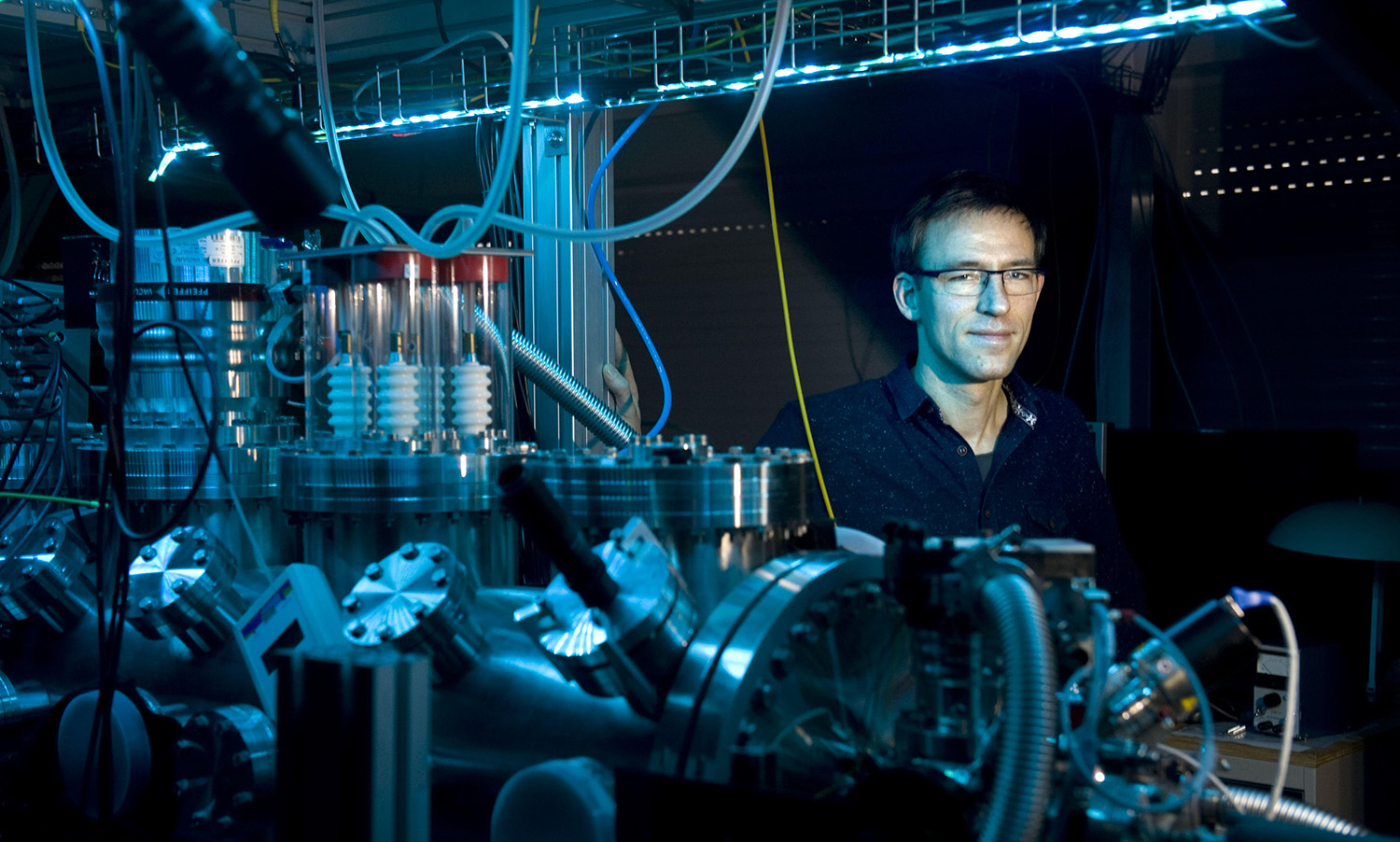Physicists come up with portable detector for gravitational waves

UG physicists come up with new idea:
A portable detector for gravitational waves
It’s only been five years since the LIGO detectors measured the very first gravitational waves, an achievement that resulted in a Nobel Prize for its creators. Gravitational waves, ripples in spacetime that travel across the universe like waves in a pond, enable us to measure things in the universe that we were never able to measure before. It’s a new set of ‘eyes and ears’, so to speak.
The current detectors, however, are four kilometres long. They need to be this long because they measure gravitational waves by firing two laser beams at mirrors located in the arms of the detectors. Whenever a gravitational wave is passing by, one laser takes just a little longer to reach its target than the other one does.
Portable
Groningen scientists Steven Hoekstra and Anupam Mazumdar and their colleagues at the British University College of London say there’s a different way. In an article that will soon be published in the New Journal of Physics, they propose a ‘portable’ detector.
This kind of detector would be capable of measuring much lower frequencies than the current detectors’, says Hoekstra. ‘It’s much more sensitive to them. It would also allow us to set up a whole network of detectors, since it’s much smaller.’
To measure the waves, they want to use a minuscule diamond that they’ll put in a ‘quantum superposition’. They’ll be able to do that because it has a built-in imperfection: a single nitrogen atom among a sea of carbon atoms.
Next, they want to shoot photons, aka light, at this little diamond. This leads to a bizarre situation that’s par for the course in quantum mechanics: the photon is simultaneously absorbed and reflected by the electron in the nitrogen atom. This creates a superposition with two particles: one is sensitive to magnetic fields, while the other isn’t.
Gravitational wave
‘Using a magnetic field, we can separate these particles, leaving approximately a metre of space between them’, Hoekstra explains. ‘If we then reverse the field, the particles come back together.’
But if a gravitational wave has passed in the meantime, causing the world to contract in one location and expand in another, one particle will take just a little bit longer to get back to its original position than the other, altering its wave pattern. That is something we can measure.
At least, in theory, Hoekstra adds. An experiment like this pushes the boundaries between quantum mechanics and the ‘real world’ to the extreme. ‘Putting, and keeping, a diamond in superposition is really difficult’, says Hoekstra.
This is due in part because the diamond is extremely sensitive; light or even the heat radiating from an object at room temperature could mess with the readings. Another problem is that the diamond is so big, at least for an experimental physicist, who is used to working with atoms. This means the experiment has to right not just once, but continuously. The experiment consists of constantly shooting photons at various diamonds.
Really difficult
The next challenge is to create a stable magnetic field. It’s also important for the diamond to all have the exact same mass.
Hoekstra says it’s all possible. ‘That’s what’s so great about this idea, where experimental physicists work together with theorists like Mazumdar’, he says.
‘It’s really difficult and it will certainly take decades before we succeed, but right now there’s no reason we can see why it wouldn’t work.’



